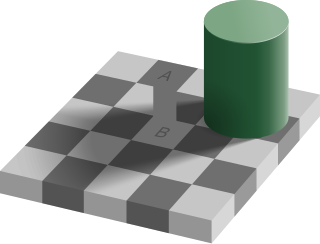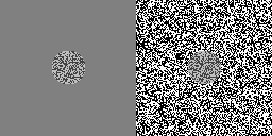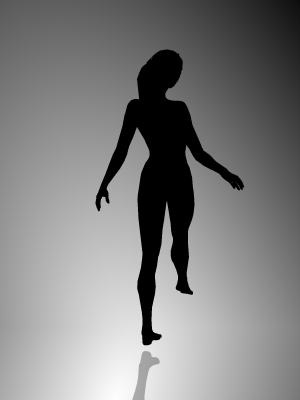
The philosophy of perception is concerned with the nature of perceptual experience and the status of perceptual data, in particular how they relate to beliefs about, or knowledge of, the world. Any explicit account of perception requires a commitment to one of a variety of ontological or metaphysical views. Philosophers distinguish internalist accounts, which assume that perceptions of objects, and knowledge or beliefs about them, are aspects of an individual's mind, and externalist accounts, which state that they constitute real aspects of the world external to the individual. The position of naïve realism—the 'everyday' impression of physical objects constituting what is perceived—is to some extent contradicted by the occurrence of perceptual illusions and hallucinations and the relativity of perceptual experience as well as certain insights in science. Realist conceptions include phenomenalism and direct and indirect realism. Anti-realist conceptions include idealism and skepticism. Recent philosophical work have expanded on the philosophical features of perception by going beyond the single paradigm of vision.

Perception is the organization, identification, and interpretation of sensory information in order to represent and understand the presented information or environment. All perception involves signals that go through the nervous system, which in turn result from physical or chemical stimulation of the sensory system. Vision involves light striking the retina of the eye; smell is mediated by odor molecules; and hearing involves pressure waves.
An illusion is a distortion of the senses, which can reveal how the mind normally organizes and interprets sensory stimulation. Although illusions distort the human perception of reality, they are generally shared by most people.

In visual perception, an optical illusion is an illusion caused by the visual system and characterized by a visual percept that arguably appears to differ from reality. Illusions come in a wide variety; their categorization is difficult because the underlying cause is often not clear but a classification proposed by Richard Gregory is useful as an orientation. According to that, there are three main classes: physical, physiological, and cognitive illusions, and in each class there are four kinds: Ambiguities, distortions, paradoxes, and fictions. A classical example for a physical distortion would be the apparent bending of a stick half immerged in water; an example for a physiological paradox is the motion aftereffect. An example for a physiological fiction is an afterimage. Three typical cognitive distortions are the Ponzo, Poggendorff, and Müller-Lyer illusion. Physical illusions are caused by the physical environment, e.g. by the optical properties of water. Physiological illusions arise in the eye or the visual pathway, e.g. from the effects of excessive stimulation of a specific receptor type. Cognitive visual illusions are the result of unconscious inferences and are perhaps those most widely known.
Gestalt psychology, gestaltism, or configurationism is a school of psychology that emerged in the early twentieth century in Austria and Germany as a theory of perception that was a rejection of basic principles of Wilhelm Wundt's and Edward Titchener's elementalist and structuralist psychology.

The term phi phenomenon is used in a narrow sense for an apparent motion that is observed if two nearby optical stimuli are presented in alternation with a relatively high frequency. In contrast to beta movement, seen at lower frequencies, the stimuli themselves do not appear to move. Instead, a diffuse, amorphous shadowlike something seems to jump in front of the stimuli and occlude them temporarily. This shadow seems to have nearly the color of the background. Max Wertheimer first described this form of apparent movement in his habilitation thesis, published 1912, marking the birth of Gestalt psychology.
Multistable perception is a perceptual phenomenon in which an observer experiences an unpredictable sequence of spontaneous subjective changes. While usually associated with visual perception, multistable perception can also be experienced with auditory and olfactory percepts.

The term illusory motion, also known as motion illusion or "apparent motion", is an optical illusion in which a static image appears to be moving due to the cognitive effects of interacting color contrasts, object shapes, and position. The stroboscopic animation effect is the most common type of illusory motion and is perceived when images are displayed in fast succession, as occurs in movies. The concept of illusory motion was allegedly first described by Aristotle.

The wagon-wheel effect is an optical illusion in which a spoked wheel appears to rotate differently from its true rotation. The wheel can appear to rotate more slowly than the true rotation, it can appear stationary, or it can appear to rotate in the opposite direction from the true rotation.
Subjective constancy or perceptual constancy is the perception of an object or quality as constant even though our sensation of the object changes. While the physical characteristics of an object may not change, in an attempt to deal with the external world, the human perceptual system has mechanisms that adjust to the stimulus.
The kappa effect or perceptual time dilation is a temporal perceptual illusion that can arise when observers judge the elapsed time between sensory stimuli applied sequentially at different locations. In perceiving a sequence of consecutive stimuli, subjects tend to overestimate the elapsed time between two successive stimuli when the distance between the stimuli is sufficiently large, and to underestimate the elapsed time when the distance is sufficiently small.
The size–weight illusion, also known as the Charpentier illusion, is named after the French physician Augustin Charpentier because he was the first to demonstrate the illusion experimentally. It is also called De Moor's illusion, named after Belgian physician Jean Demoor (1867–1941).
A sensory cue is a statistic or signal that can be extracted from the sensory input by a perceiver, that indicates the state of some property of the world that the perceiver is interested in perceiving.

The flash lag illusion or flash-lag effect is a visual illusion wherein a flash and a moving object that appear in the same location are perceived to be displaced from one another. Several explanations for this simple illusion have been explored in the neuroscience literature.

The Chubb illusion is an optical illusion or error in visual perception in which the apparent contrast of an object varies substantially to most viewers depending on its relative contrast to the field on which it is displayed. These visual illusions are of particular interest to researchers because they may provide valuable insights in regard to the workings of human visual systems.

In visual perception, the kinetic depth effect refers to the phenomenon whereby the three-dimensional structural form of an object can be perceived when the object is moving. In the absence of other visual depth cues, this might be the only perception mechanism available to infer the object's shape. Being able to identify a structure from a motion stimulus through the human visual system was shown by Wallach and O'Connell in the 1950s through their experiments.
The cutaneous rabbit illusion is a tactile illusion evoked by tapping two or more separate regions of the skin in rapid succession. The illusion is most readily evoked on regions of the body surface that have relatively poor spatial acuity, such as the forearm. A rapid sequence of taps delivered first near the wrist and then near the elbow creates the sensation of sequential taps hopping up the arm from the wrist towards the elbow, although no physical stimulus was applied between the two actual stimulus locations. Similarly, stimuli delivered first near the elbow then near the wrist evoke the illusory perception of taps hopping from elbow towards wrist. The illusion was discovered by Frank Geldard and Carl Sherrick of Princeton University, in the early 1970s, and further characterized by Geldard (1982) and in many subsequent studies. Geldard and Sherrick likened the perception to that of a rabbit hopping along the skin, giving the phenomenon its name. While the rabbit illusion has been most extensively studied in the tactile domain, analogous sensory saltation illusions have been observed in audition and vision. The word "saltation" refers to the leaping or jumping nature of the percept.

Motion Induced Blindness (MIB), also known as Bonneh's illusion is a visual illusion in which a large, continuously moving pattern erases from perception some small, continuously presented, stationary dots when one looks steadily at the center of the display. It was discovered by Bonneh, Cooperman, and Sagi (2001), who used a swarm of blue dots moving on a virtual sphere as the larger pattern and three small yellow dots as the smaller pattern. They found that after about 10 seconds, one or more of the dots disappeared for brief, random times.

A phantom contour is a type of illusory contour. Most illusory contours are seen in still images, such as the Kanizsa triangle and the Ehrenstein illusion. A phantom contour, however, is perceived in the presence of moving or flickering images with contrast reversal. The rapid, continuous alternation between opposing, but correlated, adjacent images creates the perception of a contour that is not physically present in the still images. Quaid et al. have also authored a PhD thesis on the phantom contour illusion and its spatiotemporal limits which maps out limits and proposes mechanisms for its perception centering around magnocellularly driven visual area MT.
Interindividual differences in perception describes the effect that differences in brain structure or factors such as culture, upbringing and environment have on the perception of humans. Interindividual variability is usually regarded as a source of noise for research. However, in recent years, it has become an interesting source to study sensory mechanisms and understand human behavior. With the help of modern neuroimaging methods such as fMRI and EEG, individual differences in perception could be related to the underlying brain mechanisms. This has helped to explain differences in behavior and cognition across the population. Common methods include studying the perception of illusions, as they can effectively demonstrate how different aspects such as culture, genetics and the environment can influence human behavior.















